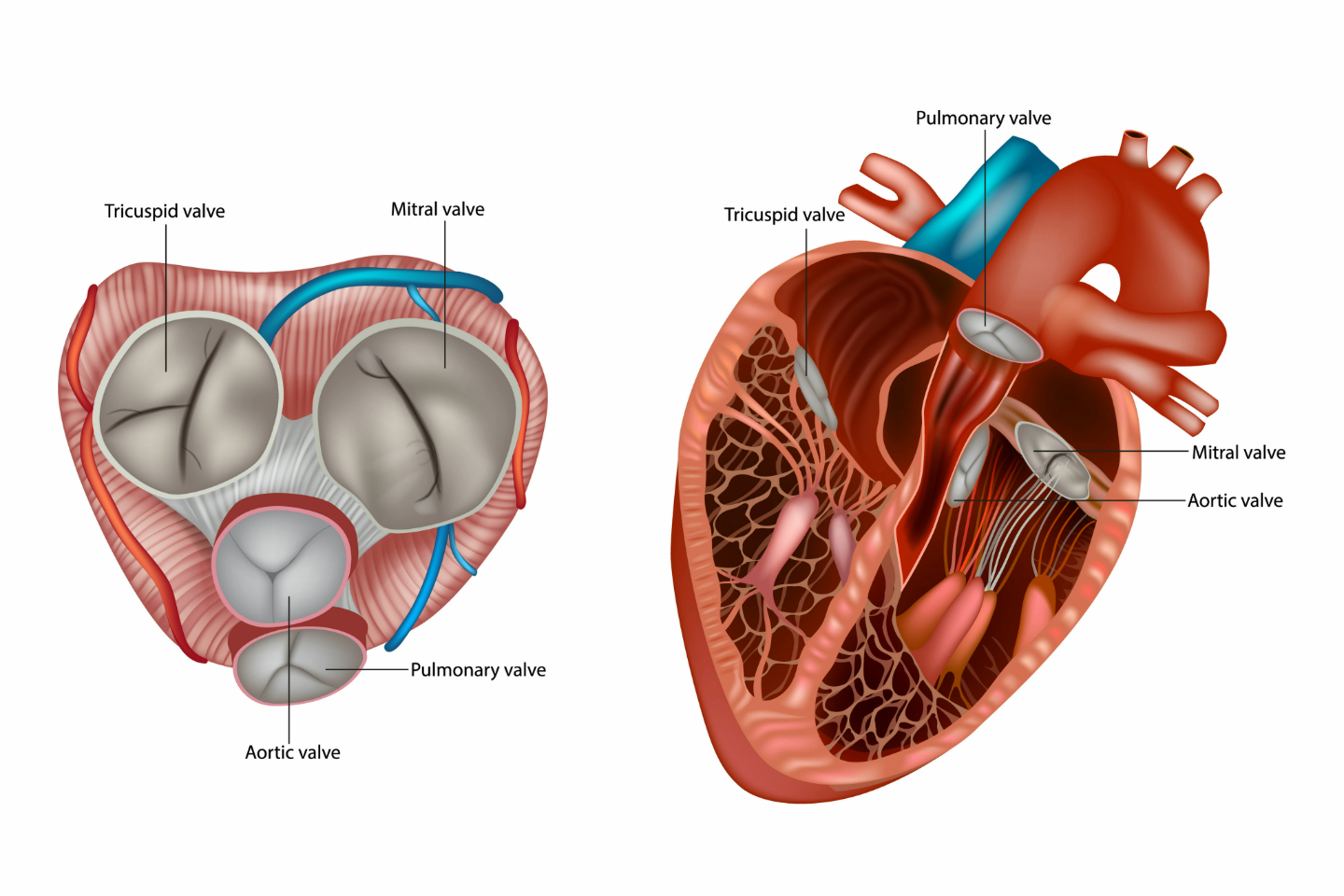Medical Devices
Difference between Aortic Stenosis and Aortic Regurgitation

Introduction
The function of the heart is to pump blood throughout the body. With two sides, four chambers, and four valves, the heart works tirelessly for life under normal healthy conditions. Sometimes, one or more of the valves may get diseased or damaged, thus disrupting the systematic flow of blood. The blood flow has a set pattern. From the body, it passes from the right side of the heart to the lungs. It is oxygenated when passing through the lungs and enters the left side of the heart and then to the rest of the body. This continues unless there is any damage to any of the valves when the heart cannot function properly. With each heartbeat, the heart valves open and shut and keep the blood flowing in the right direction. Any damage or disease to any of these valves causes heart valvular disease.
The four heart valves are:
- The aortic valve (between the left ventricle and the aorta).
- The mitral valve (between the left atrium and left ventricle).
- The tricuspid valve (between the right atrium and right ventricle).
- The pulmonary valve (between the right ventricle and the pulmonary artery).
The type of heart valvular disease depends on the valve damaged and the way that valve is damaged. Aortic Stenosis and Aortic Regurgitation are the two conditions of a diseased aortic valve. Both are serious heart valve diseases with severe heart complications that often prove life-threatening when left unaddressed or when there is a delay in the treatment.
Continue reading this blog for a better understanding of the two conditions and their differences.
What is a Heart Valve Disease?
The heart valve has two main functions. The first function of the valve is to open properly, enabling the blood to empty from the chamber. The other function is to close properly, enabling the blood to flow forward.
When the heart valve is diseased, it does not open or close properly, thereby disrupting the smooth flow of the blood. This condition of the diseased heart valve is known as heart valvular disease.
There are three causes of heart valvular disease. They are Stenosis (narrowed valve interrupting the forward blood flow), Regurgitation (leaky valve causes the backflow of the blood), and atresia (missing valve or improper valve formation).
What is Aortic Stenosis?
Aortic Stenosis (AS) is a degenerative valvular disease where the aortic valve gets damaged due to its calcification over time. A disease commonly occurs in the aged, where the valve gets narrowed due to calcium buildup or scarring, damaging the leaflets. The narrowed and stiff valve obstructs the smooth flow of the blood in the right direction, causing the heart to work hard. Over time, the heart muscles thicken, leading to cardiomyopathy, or one may experience irregular heartbeats or heart failure.
AS can be congenital or acquired. The bicuspid aortic valve is a defect of the valve at birth, where this valve has two leaflets instead of three. The causes of AS can be-
- Calcium buildup due to aging
- Previous heart attacks or high blood pressure
- Infections like rheumatic fever or infective endocarditis
- Congenital bicuspid valve
- Effects of high dose radiation, treating cancer
What is Aortic Regurgitation?
Aortic Regurgitation, also known as aortic insufficiency, is a heart valve disease where the aortic valve does not close tightly. The blood pumped out of the left ventricle pushes back from the leaky valve, causing the heart to work harder to push the blood through the aortic valve. Gradually, the valve gets widened or weakens, leading to heart failure. The causes of AR are-
- Congenital bicuspid valve or other abnormalities affecting the structure of the valve
- Aortic Stenosis due to calcium buildup
- Rheumatic fever or other infections like infective endocarditis
- Conditions like Marfan syndrome, a genetic disorder affecting the connective tissue.
- Trauma due to physical injury resulting in structural changes of the valve.
Difference between AS and AR
| Aortic Stenosis | Aortic Regurgitation |
| It is the narrowing of the aortic valve. | It is the enlarging and weakening of the valve tissue. |
| The valve does not open completely. | The valve does not close tightly. |
| The aortic valve becomes stiff. | The aortic valve becomes leaky. |
| The primary cause of AS is calcification of the aortic valve over time. | The primary cause of AR is aortic root dilation (the condition in which the first section of the aorta, where the aortic valve is located, is enlarged). |
| AS obstructs the regular flow of blood from the left ventricle through the aorta. | AR pushes the blood backward, once it flows out of the left ventricle. |
| AS restricts the anterograde flow of the blood from the left ventricle to the aorta. | AR results in the retrograde flow of the blood to the left ventricle, after it has passed the ventricle. |
| Here there is backup of blood in the left ventricle due to less amount of blood flowing forward. | Here, there is backflow of blood to the left ventricle due to the blood being pushed backward by the leaky valve. |
| There is no change in the direction of the blood flow. The blood flows in forward motion, though interruptedly. | There is a change in the direction of the blood flow. The blood is pushed back into the left ventricle. |
Both the conditions though related to heart valve dysfunction; they are different in many ways. A tabular representation would enable a quick look and easy understanding of the difference between AS and AR.
AS and AR are severe heart valvular diseases requiring timely diagnosis and treatment. Any lapse or delay in addressing the symptoms could prove devastatingly dangerous and life-threatening. Aortic valve replacement is an effective treatment option to treat a damaged aortic valve. The treatment could be a surgical intervention, known as Surgical Aortic Valve Replacement (SAVR), or a minimally invasive procedure, called the Transcatheter Aortic Valve Replacement (TAVR).
MYVALTM from Meril
Meril has a cleverly iterated diverse vascular intervention medical devices portfolio that is used in more than 100 countries. MYVALTM from Meril is an indigenously developed transcatheter heart valve designed for precision in Aortic Valve Replacement outcomes. The MYVAL-THV (Heart valve) is a biological tissue valve designed to work like one's heart valve. It is available in multiple sizes, and the specialized Heart Team will determine which size is right for the patient. The upper half of the valve has an 'open' cell design, which ensures that the coronary blood flow is not affected, and the lower half of the valve provides effective anchoring support. The unique 'hybrid honeycomb' valve design allows the doctor to place the new heart valve in the natural position accurately. This precise positioning ensures no conduction system disturbance thus eliminating the need for a new pacemaker, as seen with other valve technologies.
Conclusion
AS and AR, the two common heart valve diseases, do not show initial symptoms but gradually damage the heart if left unaddressed and untreated. The consequences of untreated AS and AR could prove life-challenging. Consult your doctor immediately on noticing any symptoms of AS or AR. With advancements in medicine, treatment for heart valve diseases is becoming less invasive and painful, ensuring faster healing and recovery with shorter hospitalization requirements. Heart health is very crucial to healthy living.
References
https://www.heart.org/en/health-topics/heart-valve-problems-and-disease/heart-valve-problems-and-causes
https://www.nhlbi.nih.gov/health/heart-valve-diseases/types
https://www.ncbi.nlm.nih.gov/books/NBK542205/





